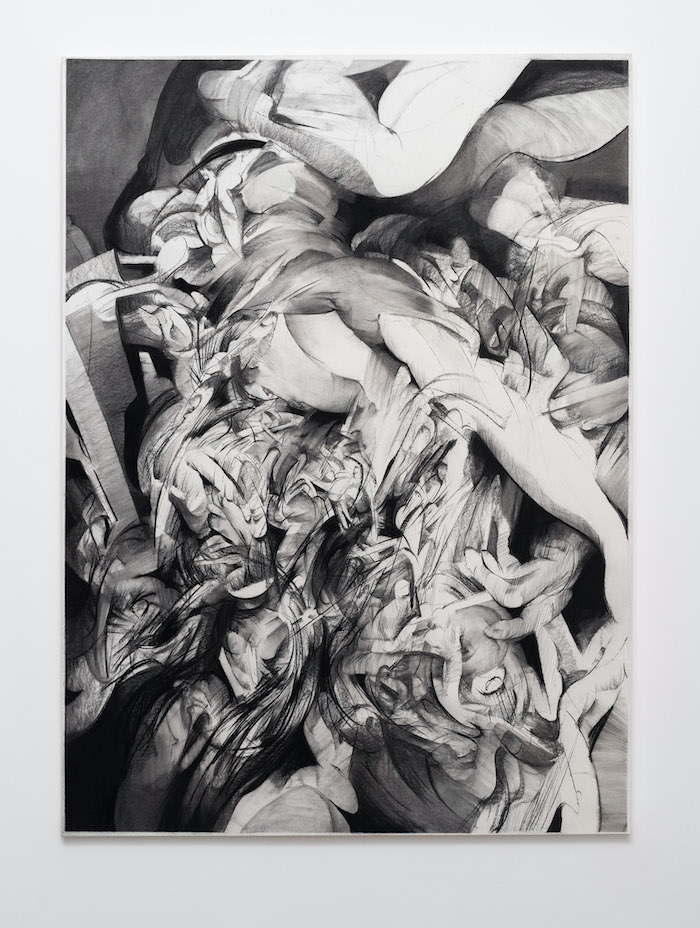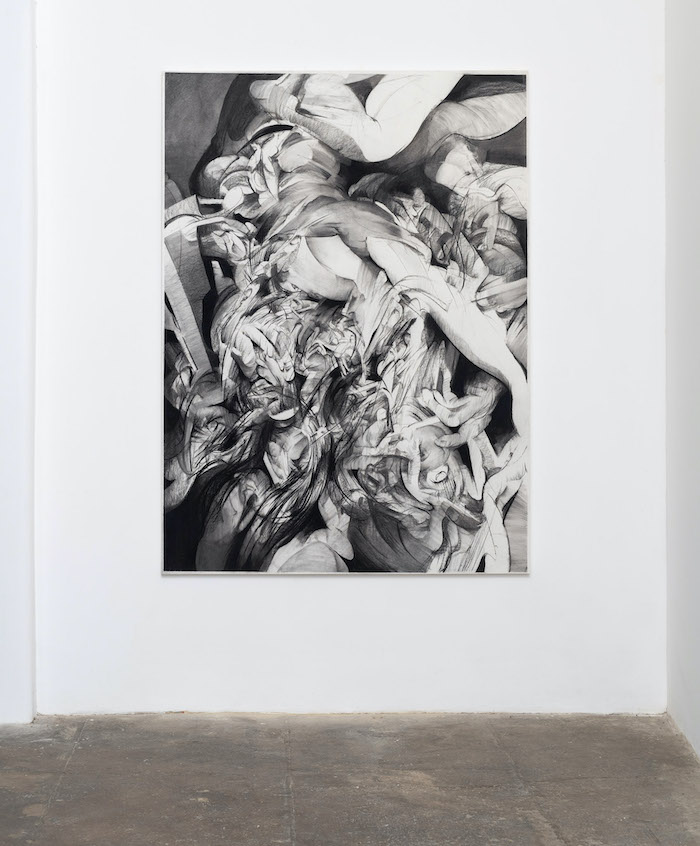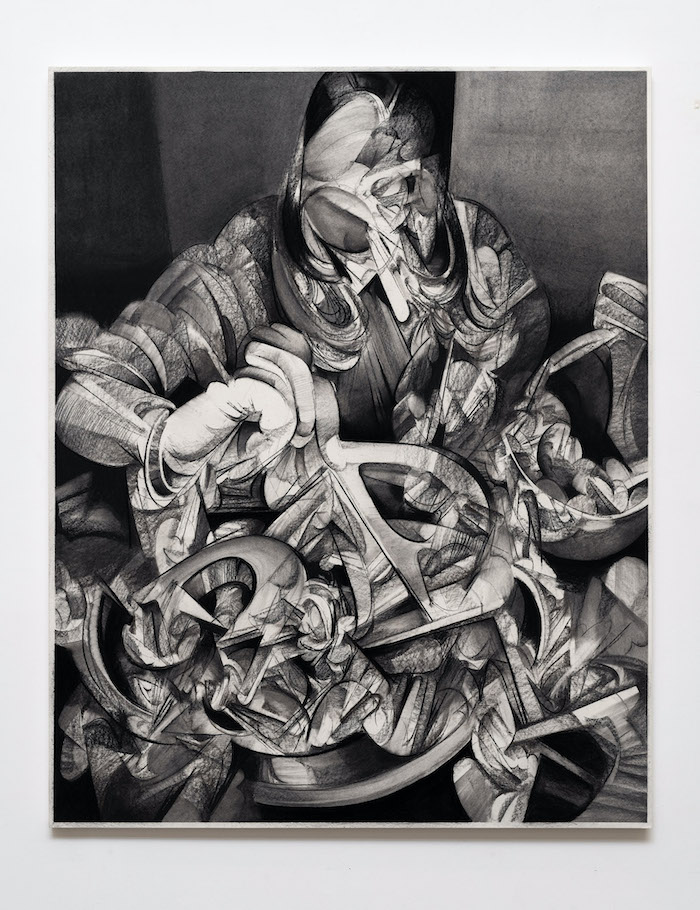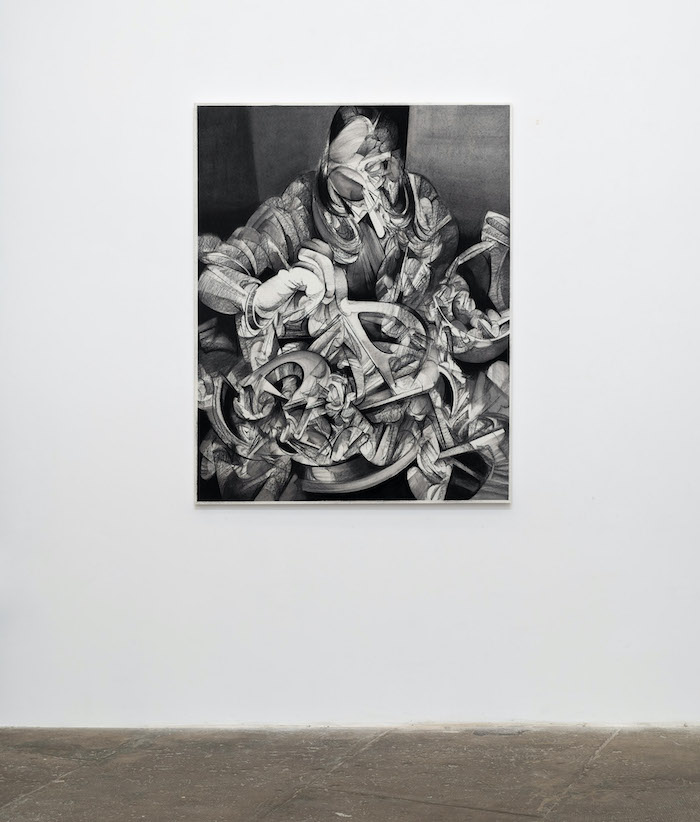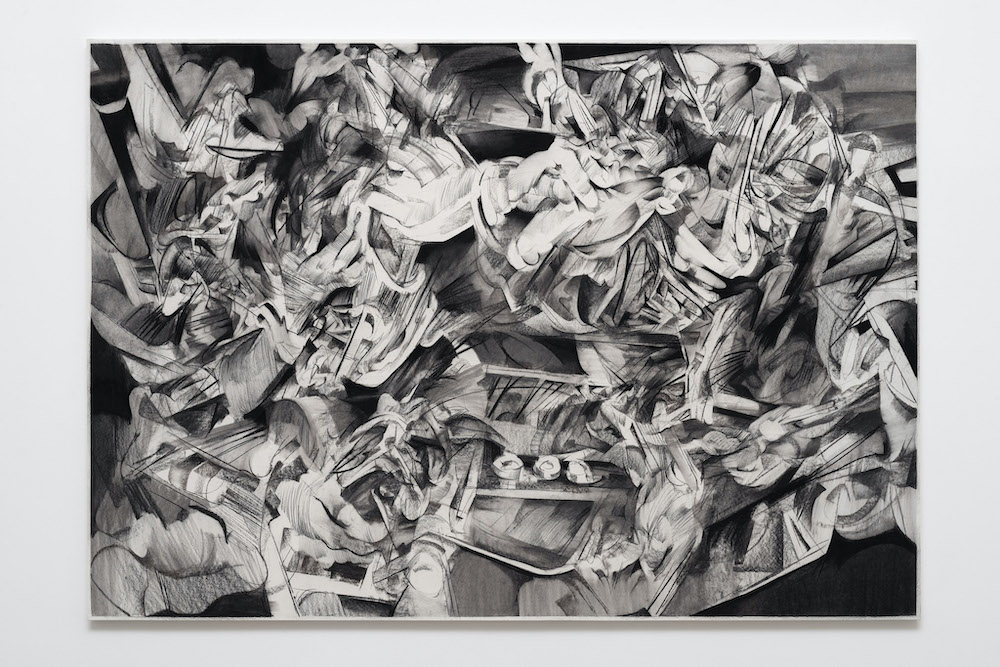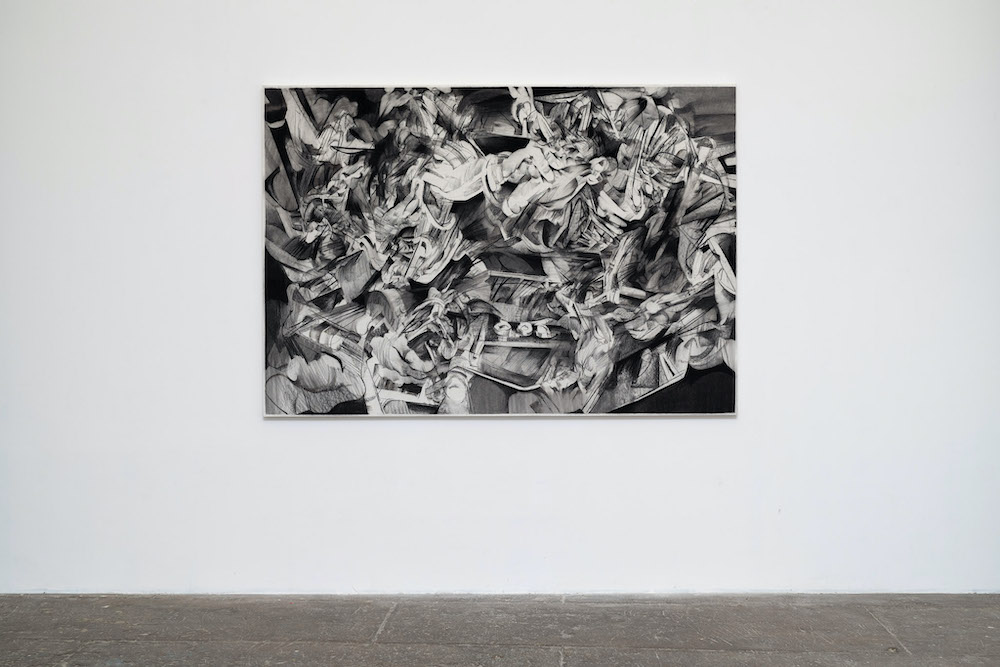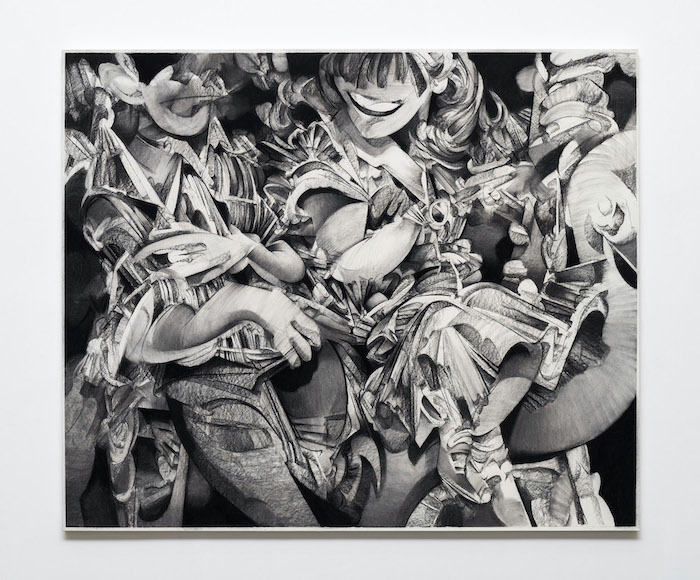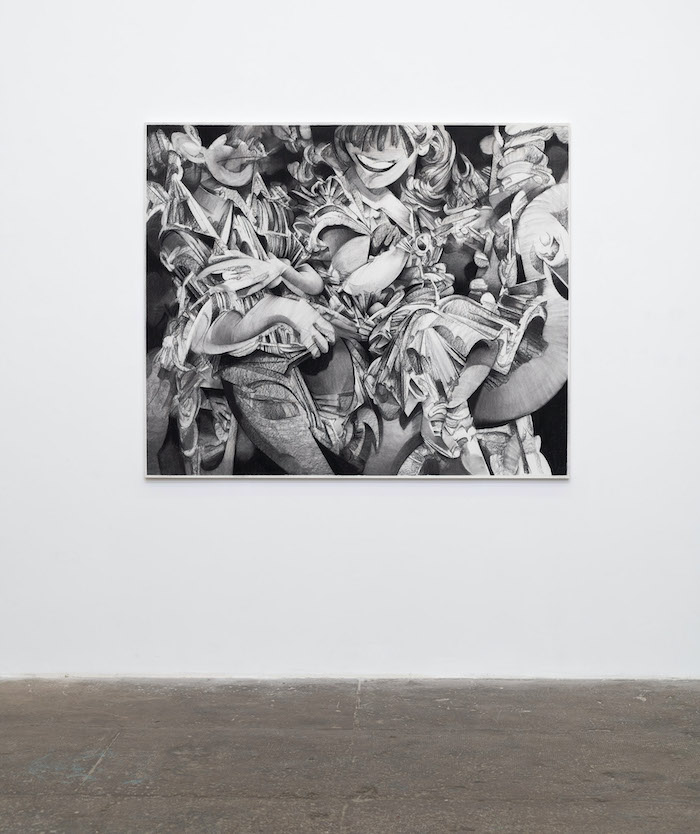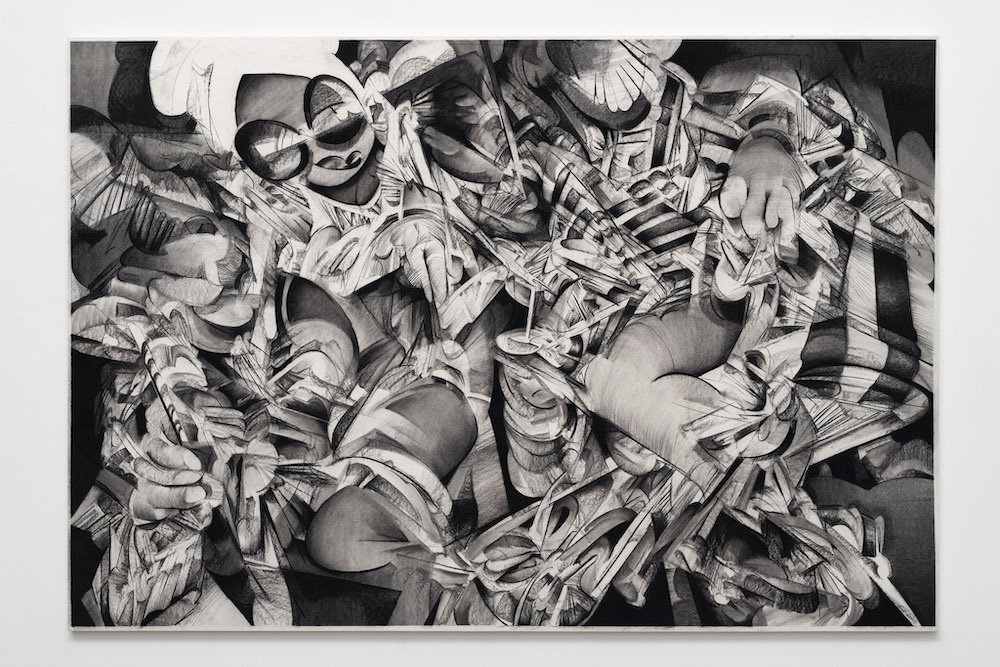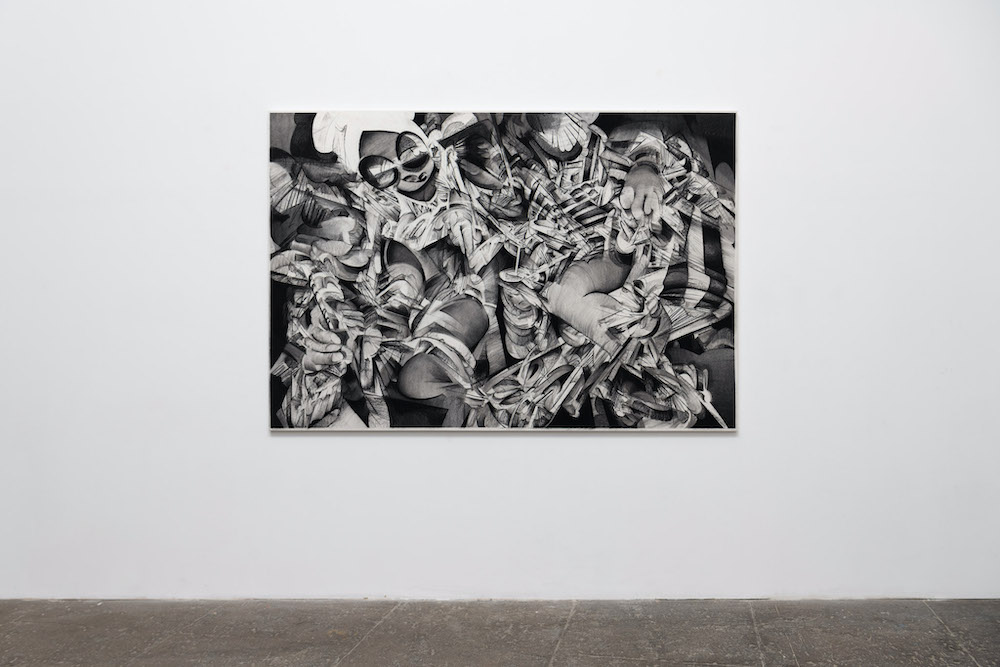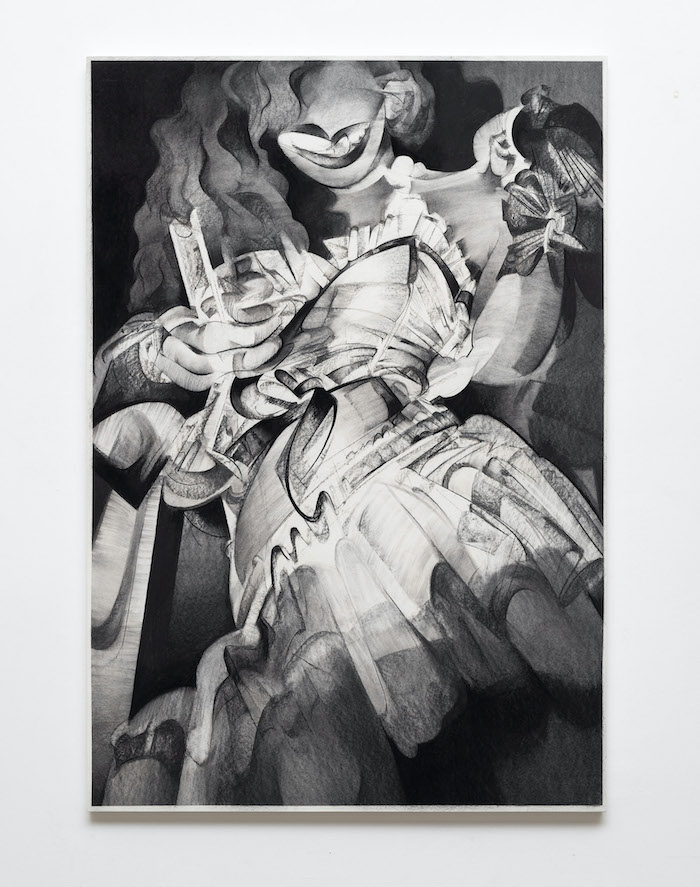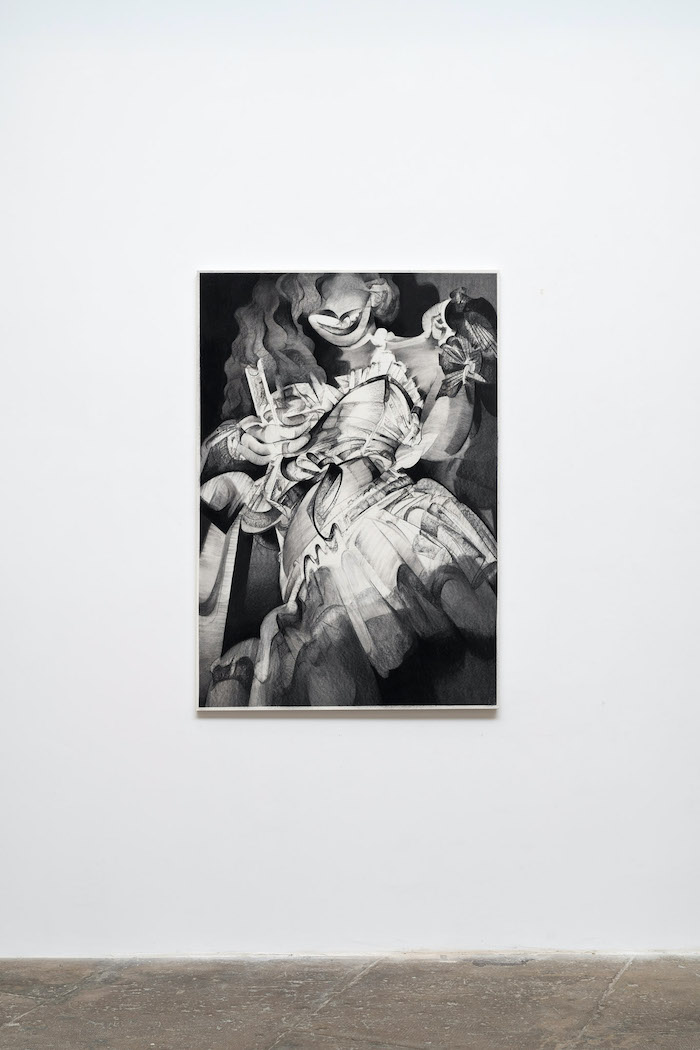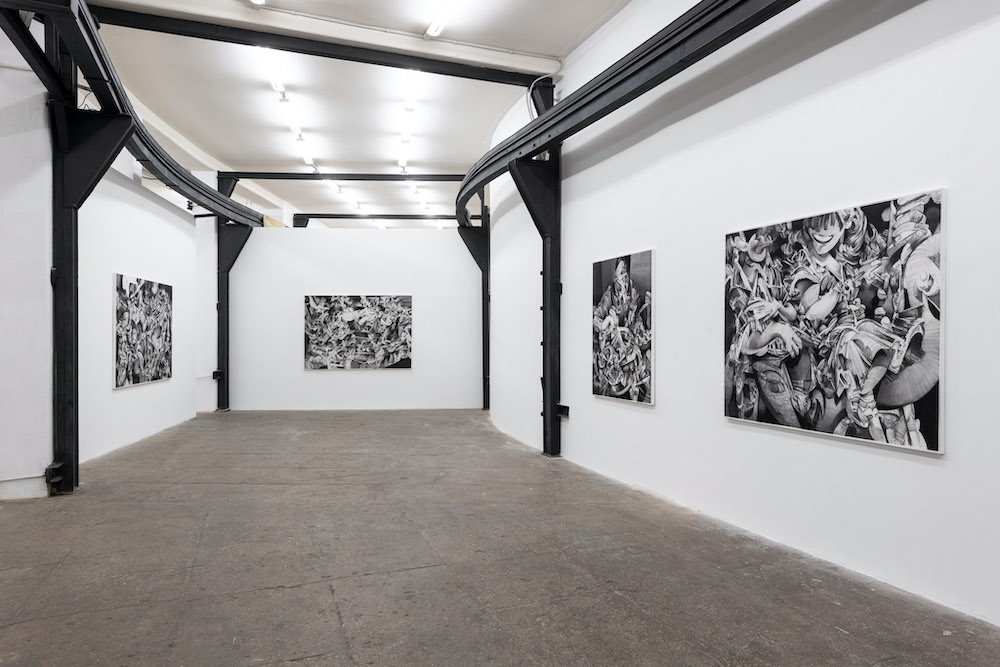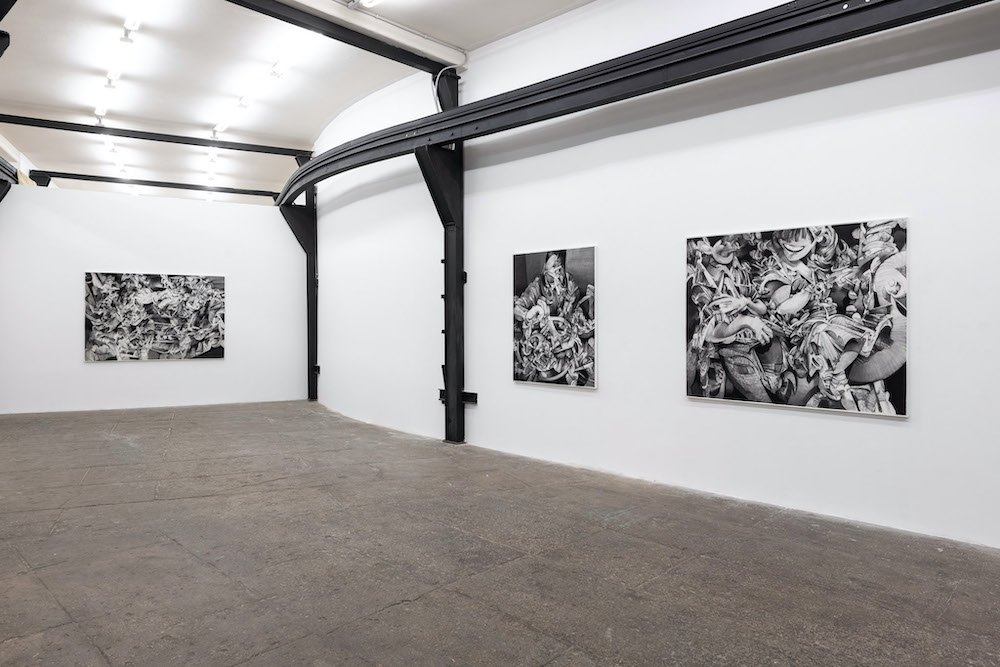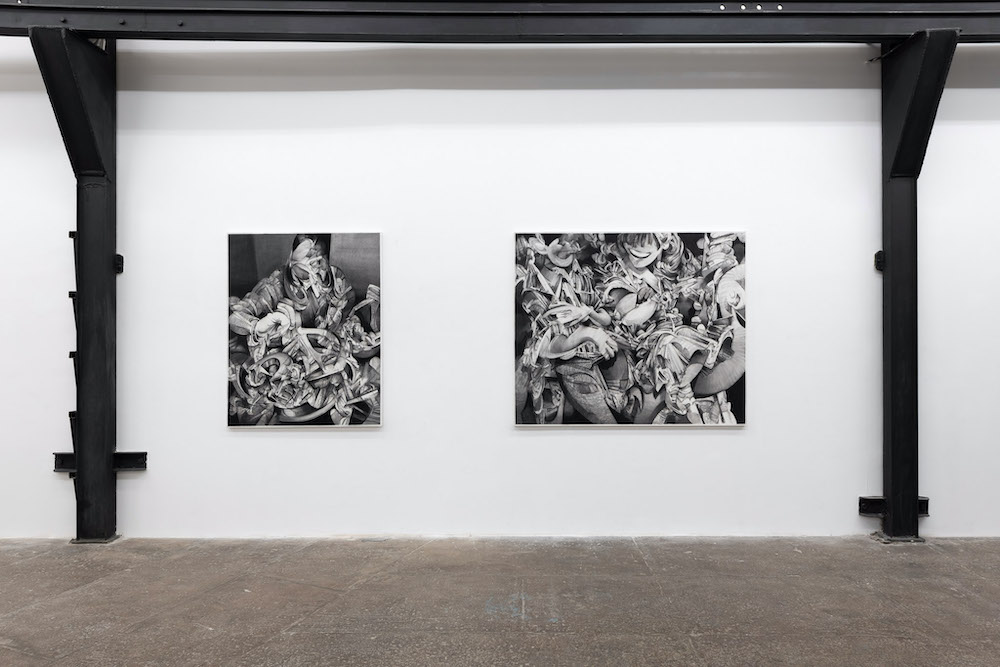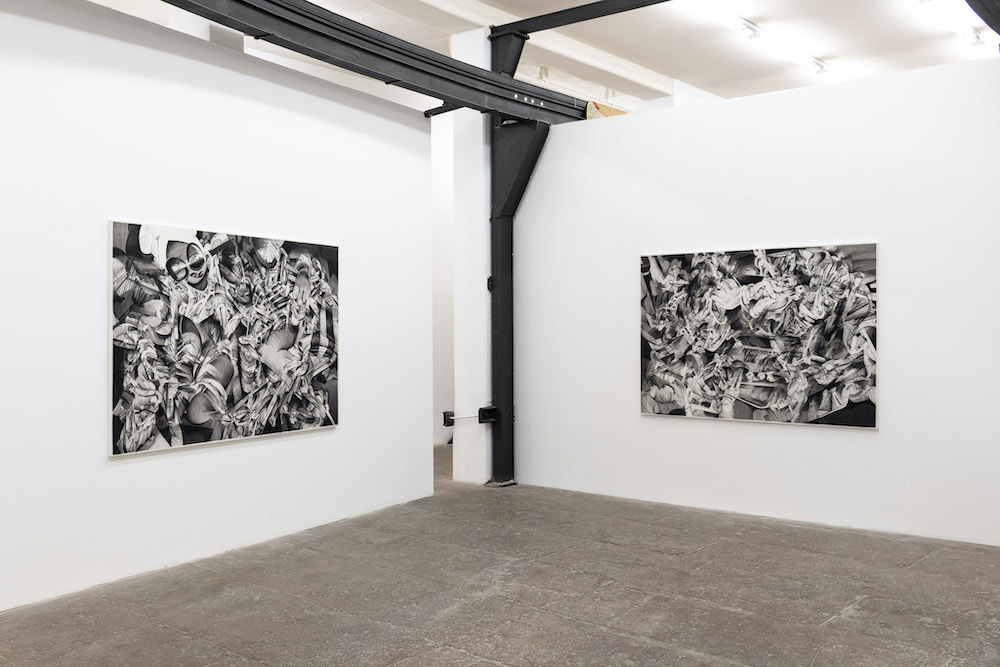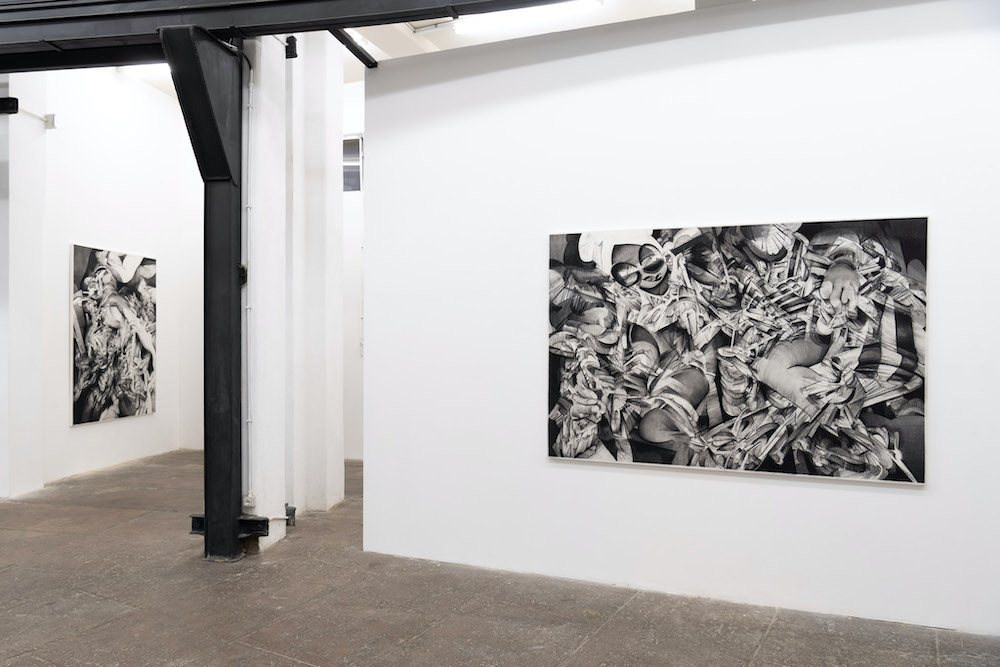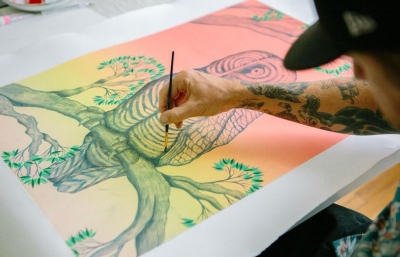When we captivated by the work of Anna Park when introducing her back in May 2019, intrigued by the intricate art masquerading as a technical puzzle. Beguiling us with familiar crowd scenes, she draws us deep into tumbleweeds of black ad white abstraction. Over a year later, in a time that feels many years different than the world back then, the Brooklyn-based artist has just opened On Tilt, her first solo show in Europe at T293 in Rome. Evolving in tandem with the random events surrounding us, a million shades of gray form a cloudstorm of decisive gestures that disclose covertly recognizable shapes—if look really hard,
Borrowing the poker term for someone who allows emotion to dictate their play, the title of the show is references spinning into irrational breakdown, not to mention the general uncertainty of everyday life. For On Tilt, the artist featured in the Fall 2019 issue, as well as Radio Juxtapoz Episode 021, has created 6 large-scale charcoal on paper pieces that stem from her fascination with people-watching, a practice she’s practiced since early childhood. Primarily interested in documenting or portraying her events experienced throughout life, work in the show is seen through the abstracted emotion of such episodes.
Possessing that same interest in capturing "the moment right in between pure fuckery, debauchery, and ecstasy," Park's vision now appears to be a wider panorama. Where her earlier work was focused on partying, sports or stereotypical rituals, the new body of work concentrates on the bigger picture. Influenced by the intensity of current times, pieces like This Is America, Flip The Coin, or Pass Me Another, freeze the energy of the world rather than depicting a certain event. "The piece This Is America was my attempt to examine and responding to the times we are living in now. I don't tend to create work that is inherently political, but it was almost unavoidable to not have it influence my work. I wanted only parts of the figures to be decipherable amidst this chaotic jumble that fills the space. This was a reflection of the headspace I was in creating the work; trying to make sense and find meaning in this crazy world."
As the focal point of her work started changing, the visual language she's been developing posser fewer evident representational elements. Further on, the remaining strands that evoke the presence of a figure are now going through a cartoon or Cubism-like filter. This approach can result in large manga-like eyes or lips appearing through the maze of expressive strokes or chunky, Picasso-like limbs suggesting the presence of a human in midst of the depicted chaos. "The cartoonish style was a way of bringing contrast to the harsh aggressive nature of the marks," the artist told us about these two particular influences. "The way the figures are drawn in these exaggerated forms was a way of bringing a playful quality to admittedly what is mostly a chaotic, if not violent image. The cubistic aspect emerged almost subconsciously (maybe the work Nude Descending Staircase by Duchamp has just been ingrained in my mind), but I think it was my way of understanding different ways of breaking up space as I was thinking of varying the type of marks into these pieces."
Pieces like You Rang? or Pass Me Another, also introduce a fairly new composition for the artist, in which a solitary subject is portrayed in an empty space. While functioning as an obvious contemporary take on one of the most used traditional formats, these portraits are a great example of Park's ingenuity and uniqueness of her visual language. Employing the unique qualities of her favorite technique, she is using a refined light and shadow play to construct perspectives and surfaces. Through the countless shades of grey, she is equally effective when creating the flat walls of the space depicted in the works, as well as rendering the fabrics that the subjects are wearing. Whether it's a soft sweater or silky _folds_ on the corset, the delicate shades and gestural strokes are able to conduct the qualities of these materials, while celebrating the mark-making of charcoal. —Sasha Bogojev
All photos of the installation at T293, Rome, 3 October - 13 November 2020 by Giorgio Benni



